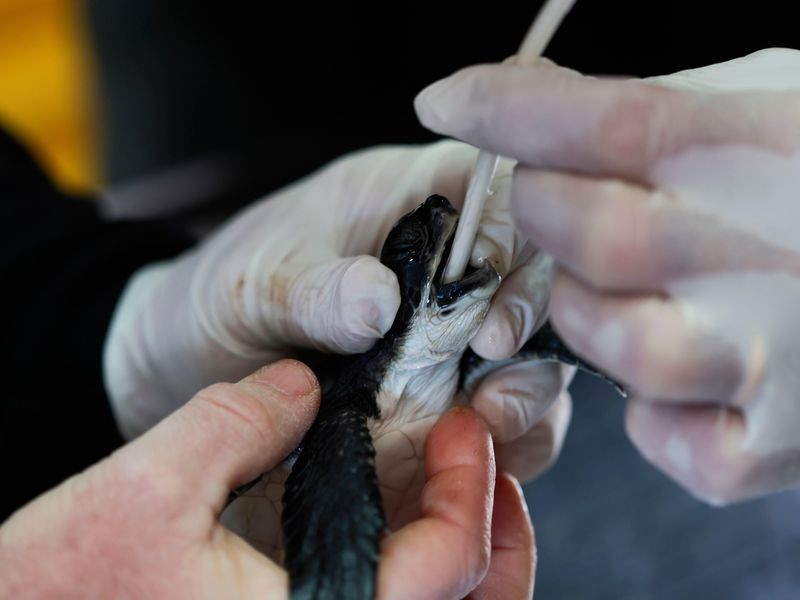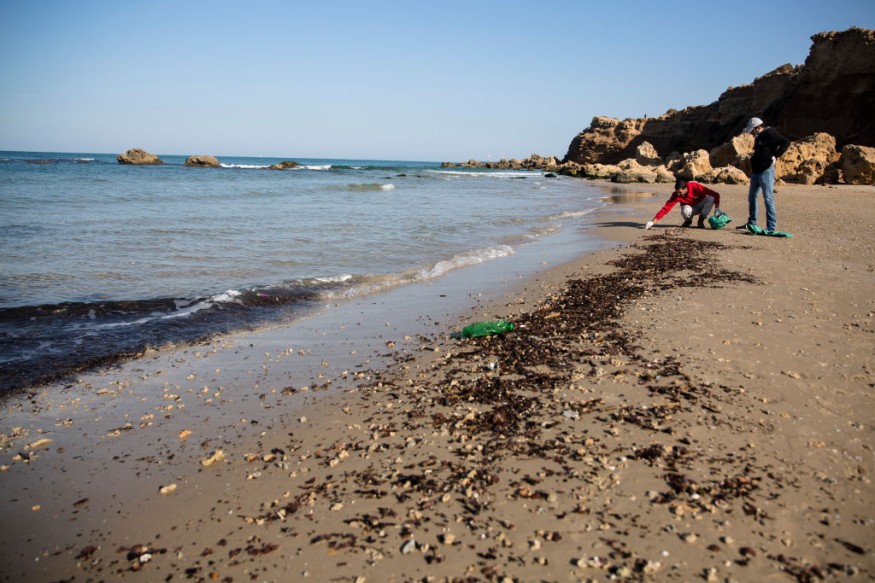
One might reach for dish soap to clean up an oily mess. But after an oil spill in Israel, a popular sandwich condiment proved to be a better choice this week for cleaning tar from the skin, throats, and nasal passages of sea turtles.
Nicoletta Lanse reveals for Live Science that workers at Israel's National Sea Turtle Rescue used mayonnaise to handle 11 endangered green sea turtles washing ashore coated in tar.
Oil Spill in the Mediterranean Sea

Last week, an unidentified source in the Mediterranean Sea caused a huge oil spill that left beaches covered in dark black tar. At least 120 miles of coastline have been impacted, prompting the Israel Nature and Parks Authority (INPA) to term it one of the country's most significant ecological failures, Ariel Shalit reports to the Associated Press.
"They (the turtles) came to us covered with tar. Both of their tracheae was full of substance from inside and outside," Guy Ivgy, a medical assistant at the Michmoret Sea Turtle Rescue Center, told the Associated Press.
Staff at the sea turtle rescue feed them mayonnaise to help the turtles clean out their digestive tracts clogged with crude oil, which would break down the tar to make it easier to remove it as feces, Ivgy told Live Science.
Mayo Solution
Live Science reported that Mayo and other fatty compounds are used because they are emulsions, combining two substances that normally don't blend readily, such as oil and water.
While being composed of oil and water, egg yolks bring mayonnaise together. There are lecithin molecules in the egg yolks, which repel water on one side and dissolve water. Lecithin, Live Science states, serves as an emulsifier that combines the water and oils, forming the sauce.
The concoction provides hydrophobic (water-repelling) and hydrophilic (water-loving) properties to the mayonnaise that enables it to interact inside the turtle's digestive tract with the hydrophobic oily tar.
The oil of the mayonnaise communicates with the tar, making it thinner. When its hydrophobic side attaches to the tar while its hydrophilic side faces the outside, Live Science notes that the lecithin from egg yolks induces a membrane between the tar and the digestive tract of the turtle. Similar to how dish soap works to scrub greasy plates, this contact makes the crude oil less oily, meaning it can be washed out.
Road to Recovery
The turtles' recovery is estimated to take one to two weeks, and after the turtles bounce back, they will be released back into the wild, reports the Associated Press.
Dangers of Oil Spills
Oil spills are dangerous to all aquatic lifeforms.
Oil damages the insulating ability of animals carrying fur, such as sea otters, and the water repellency of the feathers of a duck, thereby exposing the harsh elements to these species. Birds and rodents will suffer from hypothermia without the capacity to repel water and separate it from cold water.
Often, adolescent sea turtles will get caught in oil and mistake it for food. Oil, which can damage the lungs, immune system, and fertility, can be inhaled by dolphins and whales. When they seek to clean themselves, birds and animals often eat tar, which can poison them.
Fish, shellfish, and corals will not be instantly exposed, but if washed into the water column, they may come into contact with oil; shellfish may also be exposed in the intertidal zone.
Adult fish can undergo decreased growth, swollen livers, changes in heart and respiration rates, fin erosion, and impaired reproduction when exposed to oil. Eggs and larvae of fish may be highly vulnerable to lethal and sublethal effects. Oil can make fish and shellfish unhealthy for people to consume, even though lethal impacts are not detected.
For the latest news from the animal kingdom, don't forget to follow Nature World News!
© 2025 NatureWorldNews.com All rights reserved. Do not reproduce without permission.





